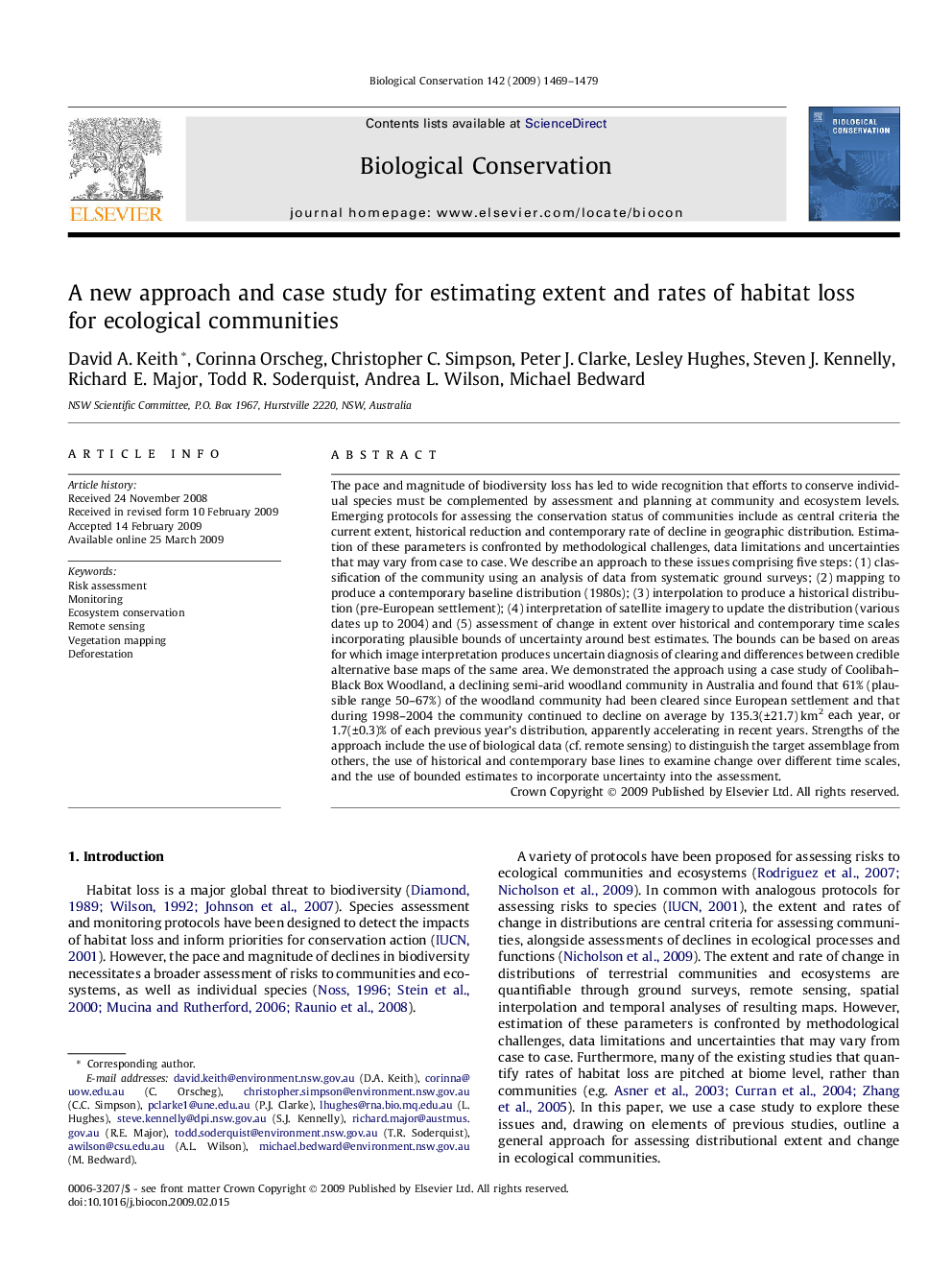| Article ID | Journal | Published Year | Pages | File Type |
|---|---|---|---|---|
| 4386480 | Biological Conservation | 2009 | 11 Pages |
The pace and magnitude of biodiversity loss has led to wide recognition that efforts to conserve individual species must be complemented by assessment and planning at community and ecosystem levels. Emerging protocols for assessing the conservation status of communities include as central criteria the current extent, historical reduction and contemporary rate of decline in geographic distribution. Estimation of these parameters is confronted by methodological challenges, data limitations and uncertainties that may vary from case to case. We describe an approach to these issues comprising five steps: (1) classification of the community using an analysis of data from systematic ground surveys; (2) mapping to produce a contemporary baseline distribution (1980s); (3) interpolation to produce a historical distribution (pre-European settlement); (4) interpretation of satellite imagery to update the distribution (various dates up to 2004) and (5) assessment of change in extent over historical and contemporary time scales incorporating plausible bounds of uncertainty around best estimates. The bounds can be based on areas for which image interpretation produces uncertain diagnosis of clearing and differences between credible alternative base maps of the same area. We demonstrated the approach using a case study of Coolibah–Black Box Woodland, a declining semi-arid woodland community in Australia and found that 61% (plausible range 50–67%) of the woodland community had been cleared since European settlement and that during 1998–2004 the community continued to decline on average by 135.3(±21.7) km2 each year, or 1.7(±0.3)% of each previous year’s distribution, apparently accelerating in recent years. Strengths of the approach include the use of biological data (cf. remote sensing) to distinguish the target assemblage from others, the use of historical and contemporary base lines to examine change over different time scales, and the use of bounded estimates to incorporate uncertainty into the assessment.
